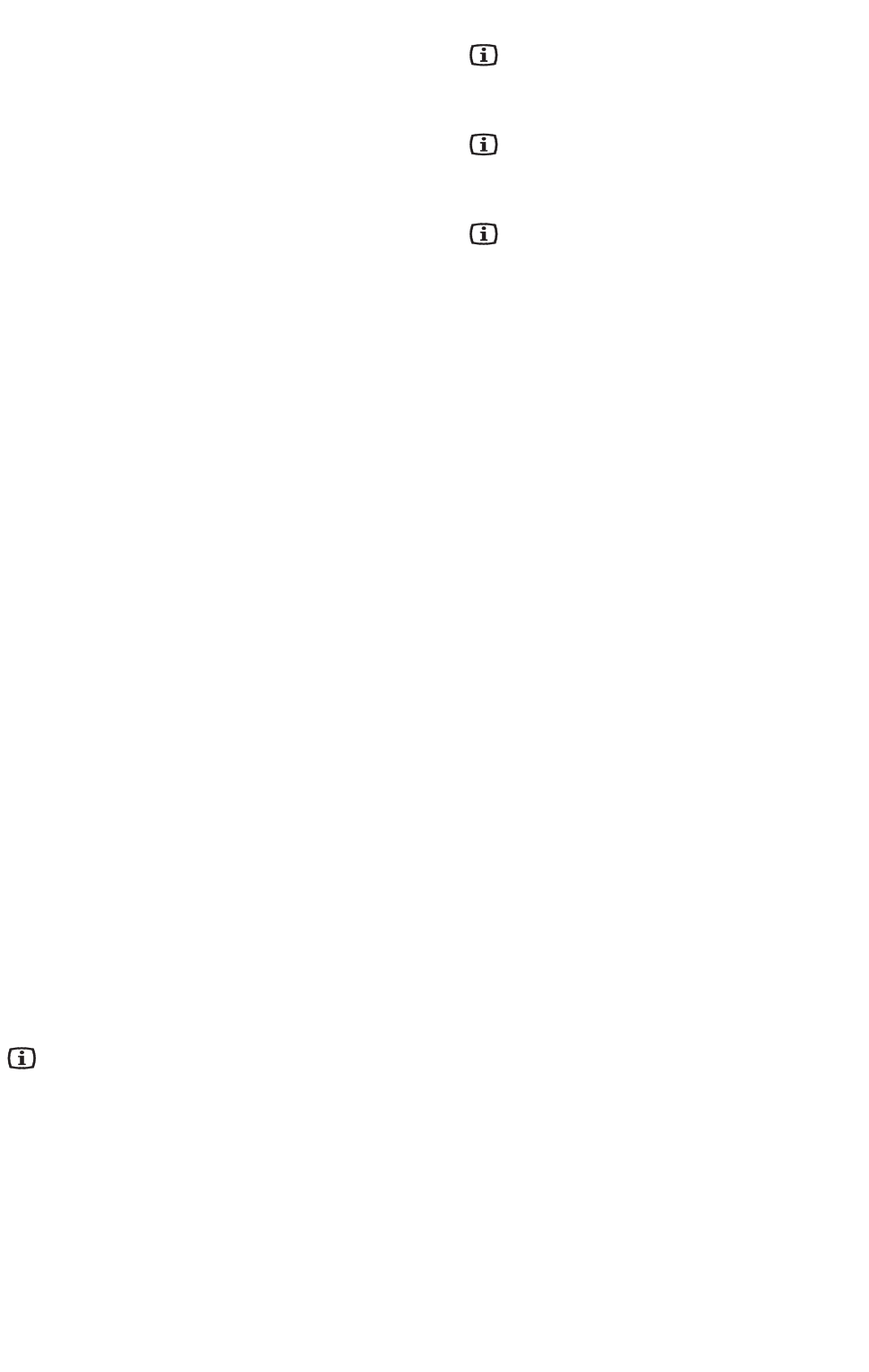
7
M. Alarm light (red)
In the event of an abnormal temperature rise inside the
freezer (e.g. power cut) this warning light will start to
flash and a buzzer will sound.
After the temperature has returned to normal, the
warning light will continue to flash, although the buzzer
has stopped.
If the alarm button is pressed, the freezer temperature
display shows for a few seconds the warmest
temperature reached in the section. The buzzer, if
sounding, will switch off.
This warning light will start to flash and a buzzer will
sound in case of a door left open. To stop the alarm light
simply close the door.
Using the Appliance
Putting it into use
Place the accessories into the appliance then plug to the
mains socket.
To start the appliance, press the ON/OFF button ("A"). The
fridge temperature display ("B") and freezer temperature
display ("G") will go on. The alarm light ("M") flashes since
the temperature is high. The buzzer sounds. To stop the
buzzer, press the alarm reset button ("L").
Note:
The appliance cannot be switched on or off if unplugged, or
if there is no power being supplied to it. Following
connection to the mains power supply, the appliance
returns to the same operating state as before the
interruption of main power.
Controlling the temperature, setting
The electronic control interrupts the cooling automatically
for more or less time depending on the set ting then restarts
it assuring the required temperature.
Temperature of the refrigerator and freezer can by set by
buttons "C"-"D" and "H"-"I", respectively. The desired
temperature is seen blinking on the respective display.
For everyday use medium setting, i.e. +5 °C in the
refrigerator and colder than -18 °C is the freezer is
recommended.
Allow the appliance to run for a period of 24 hours
whenever the temperature setting is changed. This will
allow the temperature to stabilize inside the appliance.
The temperature coming about in the refrigerator is effected
by not only the position of the thermostat but the ambient
temperature, frequency of door openings and the quantity
of food put into it.
When the coldest temperature possible is set - in
case of increased demand e.g. during heatwaves
- the compressor may operate continually. This does
not cause damages to the appliance.
How to use the refrigerator
For adequate cooling developing interior air
circulation is necessary. For this reason you are
asked not to cover the air circulation gaps behind the
shelves (e.g. with tray etc.).
Do not put hot food into the refrigerator. Allow
it to reach room temperature naturally. In this
way the unnnecessary frost building up can be
avoided.
Foods can take over odours from each other.
So it is essential to put foods in closed dishes
or wrap them in cellophane, aluminium foil, grease-
proof paper or cling film before placing them into
the refrigerator. This way foods will keep their
moisture e.g. vegetables will not dry out after some
days.


















